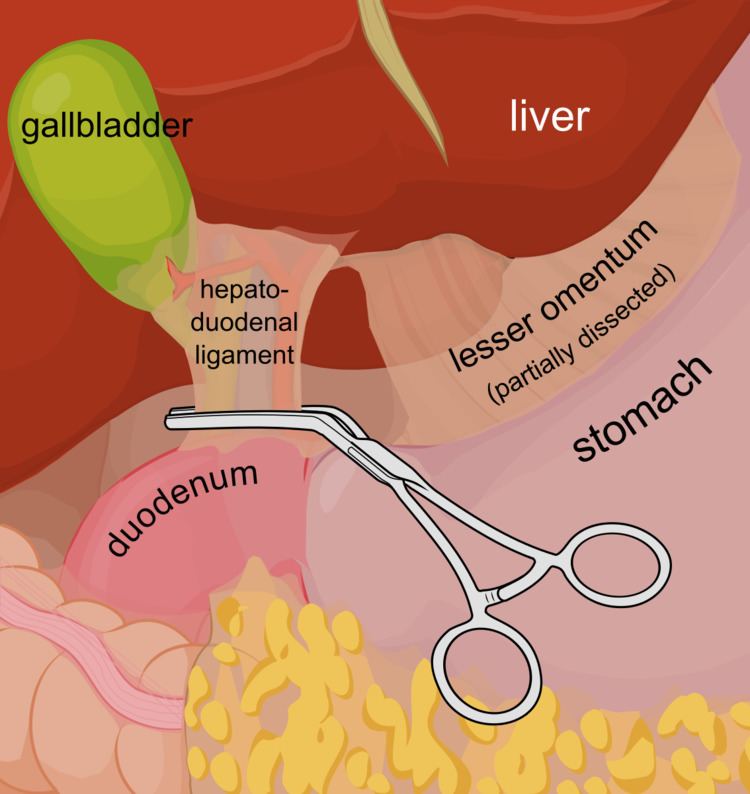 | ||
The Pringle manoeuvre is a surgical manoeuvre used in some abdominal operations. A large atraumatic haemostat is used to clamp the hepatoduodenal ligament (free border of the lesser omentum) interrupting the flow of blood through the hepatic artery and the portal vein and thus helping to control bleeding from the liver. More commonly, in the absence of soft clamp, manual compression of the hepatoduodenal ligament is performed.
Should bleeding continue, it is likely that the inferior vena cava or the hepatic vein were also traumatised. If bleeding continues, a variation in arterial blood flow may be present.
It was developed by James Hogarth Pringle, a graduate of medicine at the University of Edinburgh Medical School.
The Pringle manoeuvre is very often used during liver surgery to minimize blood loss, however it can directly lead to reperfusion phenomenon in the liver and it has recently been suggested that it should be avoided in hepatectomy for cancer patients due to its side effects on tumor recurrence and worse prognosis. The Pringle manoeuvre is applied during closure of a vena cava injury when an atriocaval shunt is placed.
